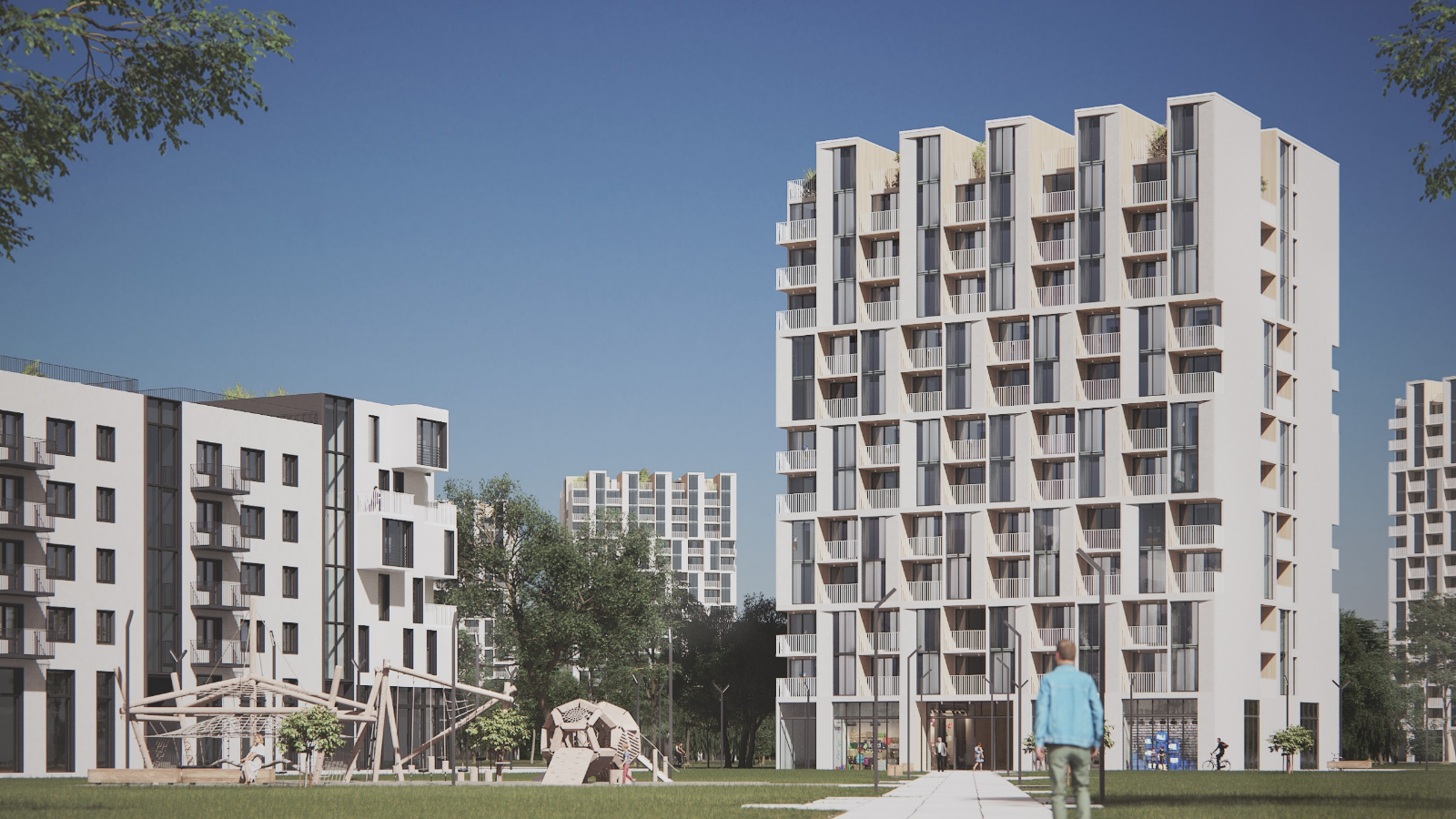Architects: Want to have your project featured? Showcase your work through Architizer and sign up for our inspirational newsletters.
As war rages on in Ukraine, the destruction left in its wake has resulted in one of the most acute housing shortages in the world. An estimated 121, 000 buildings have been fully or partially destroyed since the Russian invasion began in February 2022 — the equivalent of nearly 24 square miles (61 million square meters) of residential space. As the destruction continues to mount, millions of Ukrainians remain without adequate housing — a number that continues growing.
This looming crisis has spurred the Toronto-based architecture firm WZMH Architects to renew its focus on an innovative in-development technology that could greatly facilitate reconstruction efforts in the war-torn country. Called Speedstac, WZMH’s solution is a prefab system consisting of precast concrete modules that can be assembled in stacks or in rows and inserted into apartment buildings to replace existing units. The technology would replace portions of mid-rise and high-rise buildings damaged by fire and missile strikes without needing to demolish the buildings altogether.
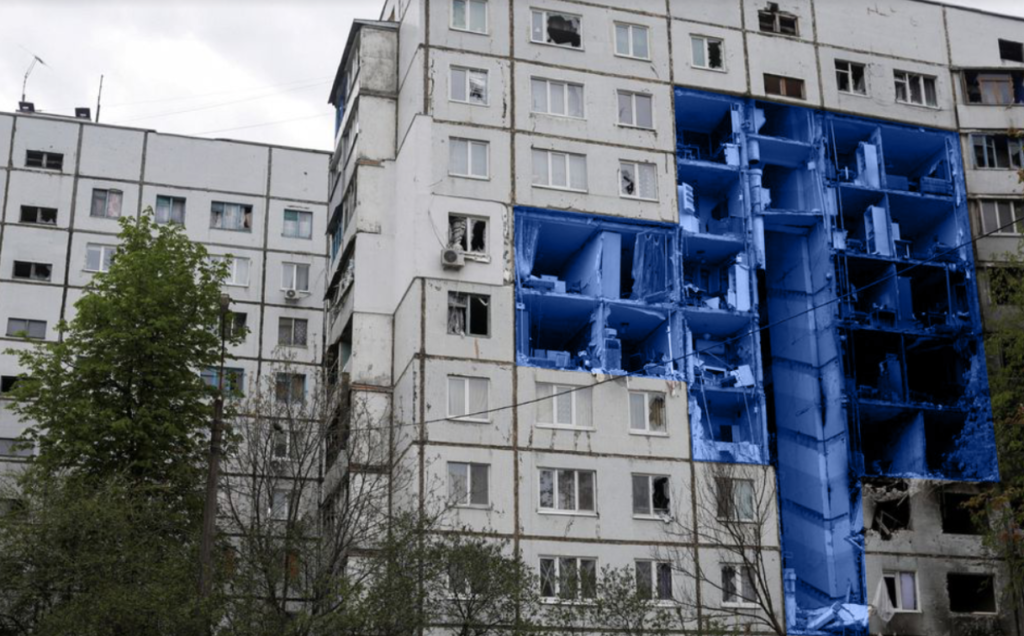
Prefabricated modular units would slide into the existing building and replace damaged sections with new residential units; image by WZMH Architects
WZMH Architects has been working on Speedstac in their Sparkbird innovation lab, a research and development collaborative founded in 2017 that includes Spring Valley Corp, Stephenson Engineering, Quasar Consulting Group and Argentum with support from Microsoft.
Initially, Speedstac was developed as a solution to address housing and construction labor shortages in the North American market, thanks to easily adaptable prefabricated modules. However, from the onsest of the Russian invasion of Ukraine, Speedstac took a different direction. A group of Ukrainian architects temporarily relocated to Canada, including Yuliia Fedorenko, who joined the WZMH team in Toronto. One day, during discussions in the Sparkbird lab, Fedorenko pointed out that the Speedstac technology could be readily applied to Ukraine, where Soviet-era mid-rise and high-rise structures are highly standardized.
“The structures of these Soviet Union-era apartments have the same dimensions and proportions as the Speedstac modules, which would make it easy to use this idea in Ukraine,” Fedorenko said. “We realized that Speedstac is like a more improved version of the Soviet Union concrete structure.”
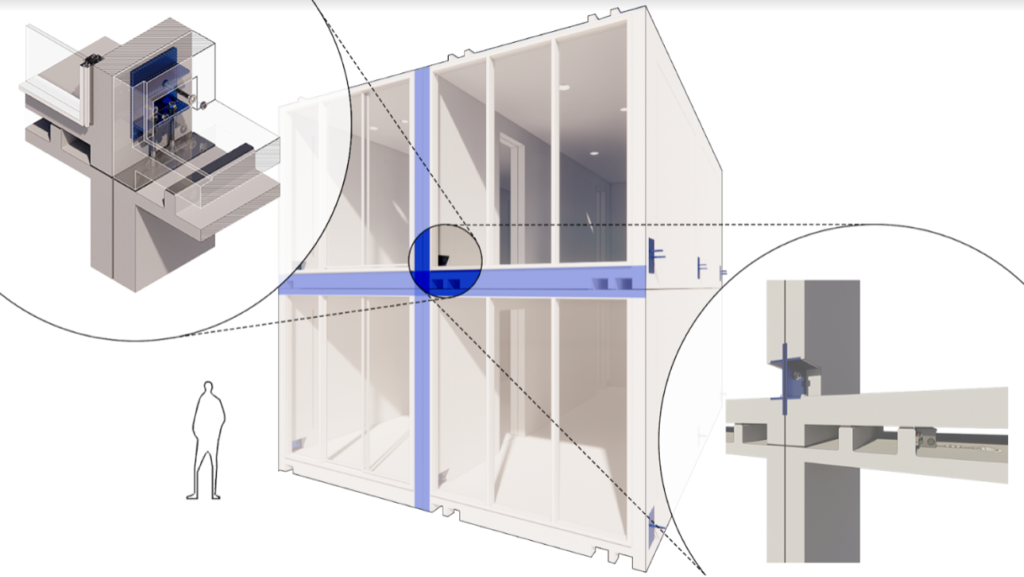
Speedstac features a unique proprietary component – a ‘special connector’ – which facilitates the process of stacking buildings together; image by WZMH Architects
With this new course in mind, the team began work in earnest. Fedorenko reached out to friends in Ukraine to collect architectural plans and structural information about Soviet-era Ukrainian apartments. Meanwhile, WZMH, with the help of the Ukrainian Embassy in Canada, enlisted architecture and engineering students from universities in Kharkiv and Donbas — two regions hit particularly hard by the war — to contribute to the project on the ground.
For Zenon Radewych, Principal at WZMH, the collaboration between individuals in Ukraine and Canada, as well as having native Ukrainians in the Toronto office to facilitate communication, has been one of the more invigorating aspects of the Speedstac initiative.
“We’re working on something where we have first-hand knowledge sitting at the table of what these buildings are all about,” Radewych said. “It’s not like we have to make guesses about the problems that existed in these buildings and question whether we have the right information. We know we’re getting the right information because we’re working with those people directly in front of us or in Ukraine.”
The Sparkbird lab has developed a few potential applications of the Speedstac technology to damaged buildings. One approach is to make clean cuts within the existing buildings to remove the destroyed sections and insert in their place the Speedstac modules using cranes and software. An alternative solution is to remove damaged portions of a building entirely and add new modular units to the top of the building to make up for the lost density. This solution, though easier to implement in practice, would require structural changes to the building like the addition of new stairs and elevators.
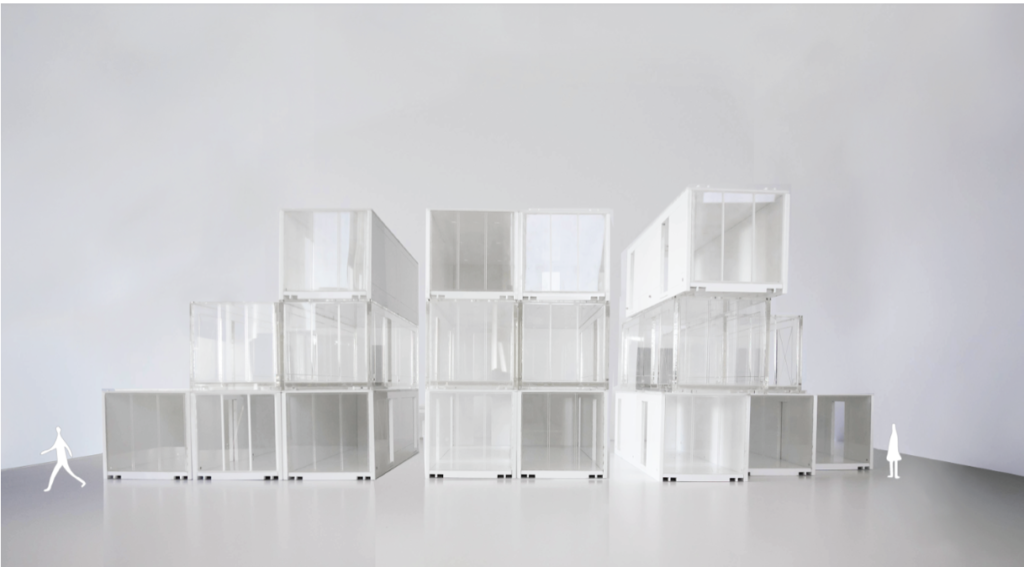
A rendering of the prefabricated, modular building blocks

Speedstac features a unique proprietary component – a ‘special connector’ – which facilitates the process of stacking buildings together; images by WZMH Architects
WZMH has secured funding for the construction of two Speedstac modules in Ukraine which Radewych expects to be built by the end of the year or early in 2023. Using these modules as prototypes, the team hopes to test out the potential design issues with pre-fabrication and modular assembly – including the strength of connector tolerances between boxes and challenges with weight. The prototypes will also help manufacturers figure out how the boxes can be mass-produced.
Given the ongoing perils caused by the war and the range of damages on buildings caused by fighting, WZMH is adopting cutting-edge technologies to analyze structures remotely. The team plans to use LIDAR scanners mounted on drones to make 3D models of buildings that are potentially compatible with Speedstac. WZMH has already identified two apartment buildings in Irpin and Bucha as candidates for 3D analysis. However, conducting drone scans is a tricky process that requires a slew of permits, because drones might be mistaken for enemy weapons and accidentally shot down.
WZMH is also relying on architects in Ukraine to collect information on prospective buildings. For this task, Fedorenko enlisted longtime friend Alexander Fil, an architect based in Kharkiv and PhD student at the Kharkiv State Academy of Design and Fine Arts. Fil, who moved to Kiev at the start of the war, has become crucial connection for WZMH and Speedstac to the reality on the ground.
“For WZMH it was important to include specialists in Ukraine, who know not just the local architectural codes but who also feel those problems — because we live in this current environment,” Fil said.
Earlier this year, Fil visited the buildings in Irpin and Bucha, which had been partially destroyed by missile strike and fire. In Irpin, Fil was even able to go inside units that were destroyed and assess the structural damage caused by the strike. Some of the damage, though perhaps not extensive, Fil remarked, was nevertheless severe, including “a concrete wall which was curved like a piece of paper”.
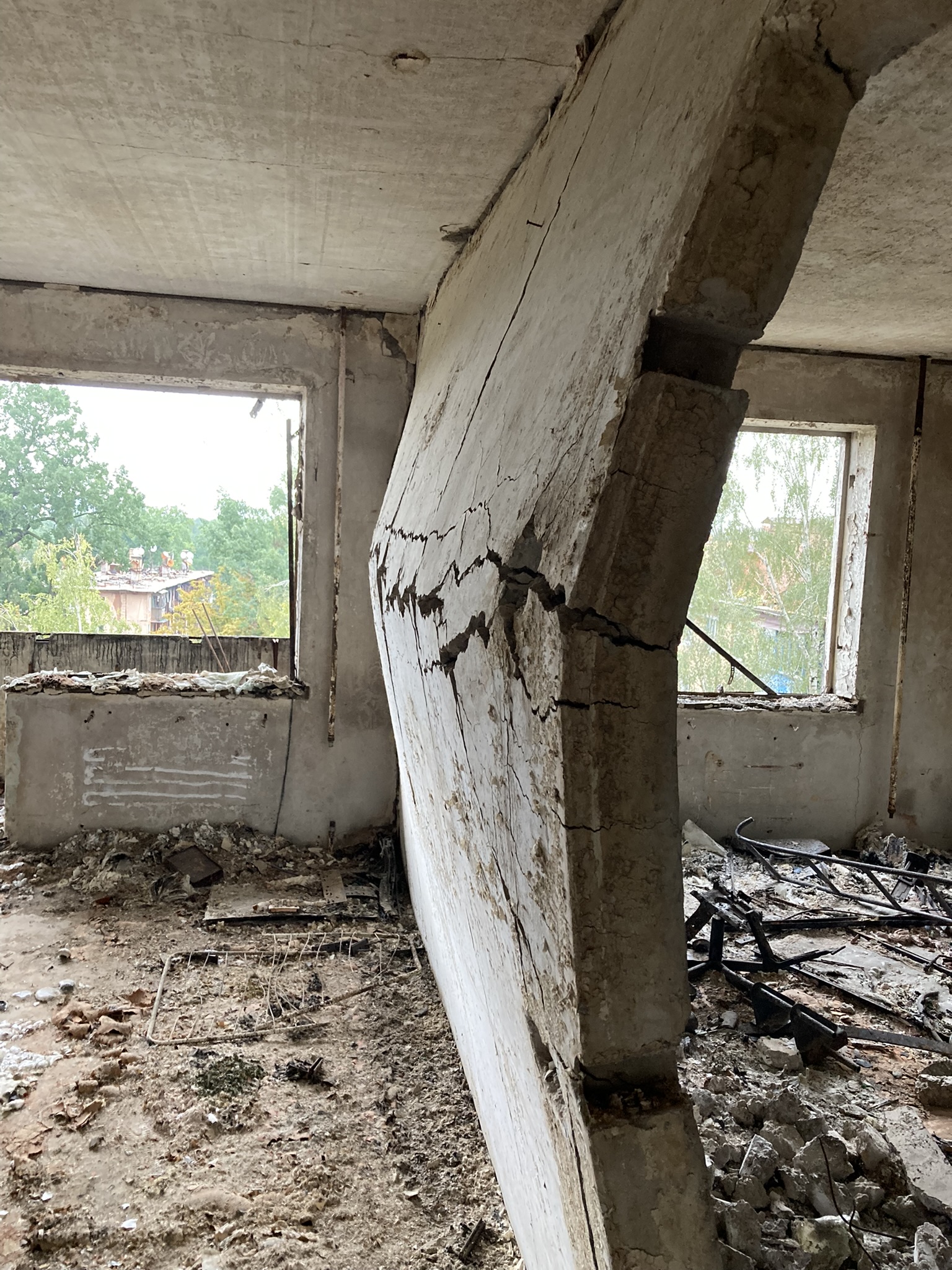
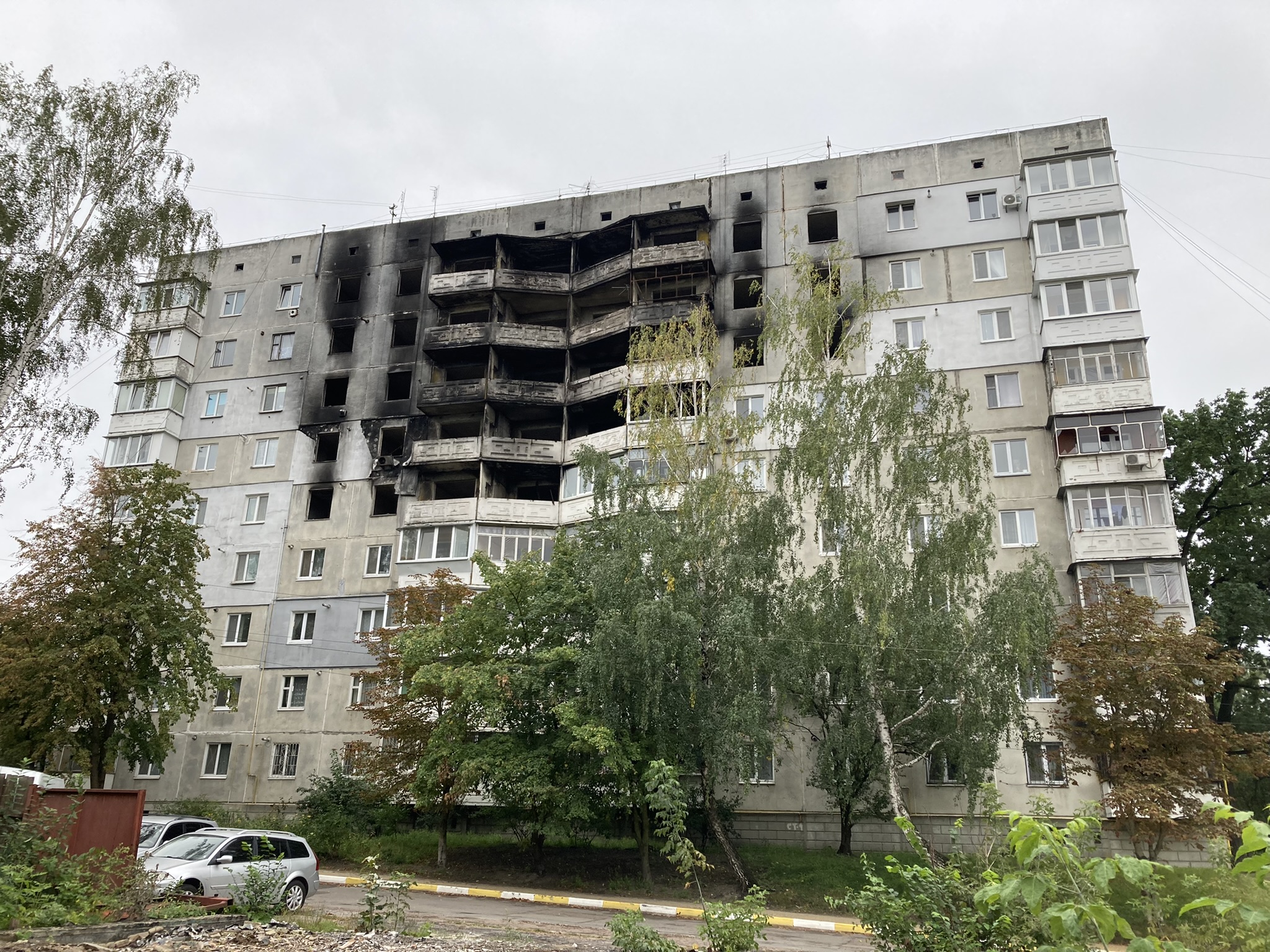
Structural damage caused by Russian missile strike in Irpin, Ukraine. Photos by Alexander Fil
Despite these grave damages, Fil notes, people still live in the building. For Fil, this highlights the importance of considering the humanitarian implications of reconstruction projects in war-torn areas: “People are still living in their flats and using the building’s amenities, so in such conditions our work requires special care,” Fil said.
Though the road to mass application is still long, Radewych finds that the application of Speedstac to the Ukrainian context has already vastly expanded the possibilities of the technology. Speedstac’s versatility could serve as a tool not only to alleviate global housing shortages, but also to quickly address other crises — natural or man-made — outside of Ukraine.
“Ukraine would be an amazing pilot for this technology, which could then be used to address housing shortages and disasters elsewhere in the world,” Radewych said. “What’s going to come out of the Ukraine situation is a lot of great inventions that will be used for the next 30, 40, 50 years.”
Architects: Want to have your project featured? Showcase your work through Architizer and sign up for our inspirational newsletters.
